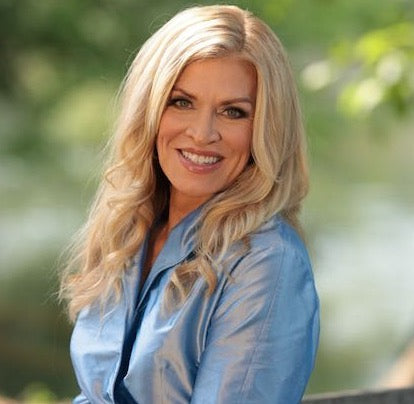
3 tips to help reverse and prevent skin damage from free radicals

We know free radicals are the bad guy in discussions of disease and aging skin. But what exactly are they? Free radicals are unstable molecules that can damage our cells. What makes them unstable is that they are missing electrons from their outer shell. The missing electron causes them to search for other atoms or molecules with these electrons to feel whole again and become stable.
If these free radicals attract electrons from your healthy skin cells during their quest, it will ultimately cause a breakdown in the skin's DNA. As healthy atoms are robbed of their electrons, it will eventually result in early aging signs like wrinkles, skin sagging, dullness, and unwanted pigmentation, like age spots and broken blood vessels.
An example of free radicals at work is an apple slice left on the counter. It turns brown as oxidation or deterioration is caused by free radicals. Your skin experiences a similar progression when continuously exposed to free radicals.
Your body is exposed to free radicals from various environmental sources, such as cigarette smoke, air pollution, and sunlight. As little as 45 minutes of noonday sun exposure can reduce the skin's protective vitamin C levels by 80% and lower other skin's antioxidants.
"Free radicals exist in our environment and can be generated from substances in the food we eat, the medicines we take, the air we breathe, and the water we drink," says Dr. Joyce Imahiyerobo-Ip, a board-certified dermatologist based in Massachusetts.
Also, with age, your body loses its ability to fight against the damage caused by free radicals. As a result, your body produces more free radicals, and oxidative stress damages more body cells.
Naturally, they cause a degenerative aging process besides other skin concerns.
1. How to Protect Your Skin from Free Radicals Be careful not to get too much sun, and always wear sunscreen, even on cloudy days. Keep sunscreen in your car to protect your hands. I learned the need for this the hard way. While moderate sunshine is beneficial as it boosts the body's vitamin D supply and can even fight depression, UV rays are the leading creators of free radicals in the skin.
2. Make sure your diet is rich in antioxidants. Vitamins and other nutrients can help protect your cells from the damaging effects of free radicals. So include foods such as blueberries, spinach, kale, green tea…and even a little dark chocolate. Vitamins A, C, and E are some of the most well-known antioxidants. You can get it from your regular food intake or apply it topically to nourish your skin.
3. Choose natural skincare with active antioxidants and restorative ingredients. Serums are often recommended because they have a higher concentration of active ingredients and be more quickly absorbed into the skin. Many excellent antioxidants to consider for protection against Free Radicals include Vitamin C & E, Resveratrol, and Niacinamide.
What we like about Vitali's Skin Restorative Serum is that it has significant regenerative properties and antioxidants. The combination of GHK-Cu (Copper Peptides) and brown algae protects your skin from free radicals and provides powerful regenerative actions to reverse skin damage.
Copper Peptides can positively impact skin fibroblasts (cells that generate connective tissue), which can combat UV damage to the skin barrier. In addition, studies show that Copper Peptides protect skin keratinocytes (the most dominant cell type in the epidermis) from lethal Ultraviolet B radiation.
One of the fascinating qualities of Copper Peptides is that they can switch gene expression from a diseased state to a healthier state. In a review of biological data demonstrating the positive effects of Copper Peptides on the skin, it is suggested that interaction and modification of antioxidant-related genes can explain its antioxidant activity. . Resource 1
The Brown Algae in the Vitali Restorative Serum is full of antioxidants that can assist in combating the effects of free radicals. The amino acids in brown algae work as antioxidants scavenging toxic free radicals. Algae are constantly exposed to intense ultraviolet radiation and harsh climate conditions within their seawater environment. As a result, these marine plants have evolved a network of defense mechanisms to defend their DNA, according to dual board-certified dermatologist Keira Barr, M.D.
Beta and alpha-carotenes in algae provide additional antioxidant protection and give brown algae its characteristic brownish-green coloring. Of the carotenoids, astaxanthin is the most powerful and has been described as nature's sunscreen and is more potent than more well-known antioxidants such as vitamin C. Resource 2
In addition to the Vitali Regenerative Serum, Vitali Skin Awakening Moisturizer and the new Restorative Body Cream also contain the powerful duo of Copper Peptides and Brown Algae.
